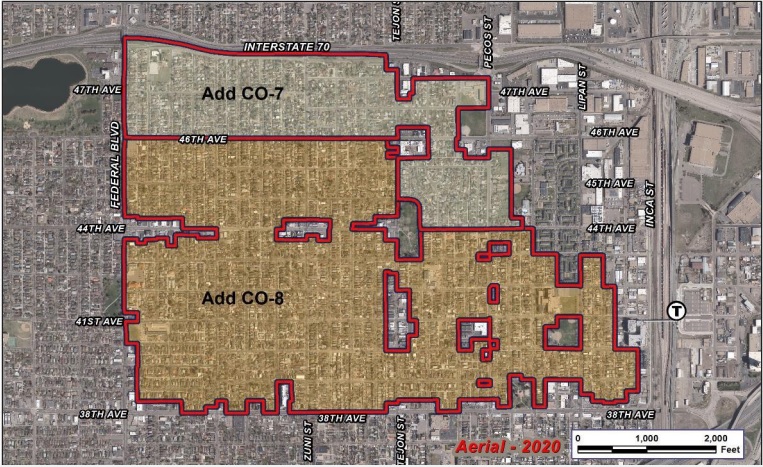By Nora Ridgeway
About nine months ago, Yvonne Gates submitted building permit applications to the city of Denver to build her daughter a home on her empty lot in the Sunnyside neighborhood.
Gates, the former owner of a construction company, is the builder on the project and has already purchased roughly 85% of the materials she will need to construct the residence. She is only waiting for the go-ahead from the city to get started.
Alongside rising interest rates, Gates has a new concern about her pending project: she has received conflicting information on the proposed Sunnyside overlays, designated as CO-7 and CO-8. If passed, she said her plans may be affected.
Initially, Gates was informed that those in the permitting queue before October would not be affected. More recently, she learned of a potential new stipulation that if a permit was submitted before October 2022 and had not yet been issued by March 12, 2024, the project would have to comply with the new requirements.
“I am hopeful that we should have the permits before the deadline, but I can only control my part,” Gates explained.

The proposed districts, the Sunnyside Conservation Overlay zone district CO-7 and the Sunnyside Conservation and Brick Overlay zone district CO-8, would apply only to the primary structure of new development on single-family and two-family lots, exactly what Gates has planned.
The overlays would sit atop the zoning codes already in place, adding a layer of regulations new home builders must follow. In this case, the proposed requirements include reducing building height to 30 feet for pitched roofs and 22 feet for low-slope roofs, reducing the vertical height from 17 feet to 14 feet, and imposing an above grade 3,000-square-foot maximum for buildings on lots of 7,500 square feet or less. The overlays would require front porches and, in a designated section of the neighborhood, brick cladding for a specified percentage of exterior walls.
The two overlays encompass nearly all residential areas in the neighborhood, except for a portion to the east.
City Councilwoman Amanda P. Sandoval, who represents the district where the overlays are proposed, said the project began before her time in office, and she highlighted the sense of duty she feels to the project given it is community led.
She said she believes the overlays will preserve what is known as “naturally occurring affordable housing,” houses in the neighborhood with smaller square footage that are more attainable than the “McMansions” developers are currently scraping properties to build.
“The intent of these overlays is to incentivize adaptively reusing homes. Incentivize popping the top on homes,” Sandoval said. “Incentivize people to be able to age in place and keep the equity in their home.”
Rod Kazenske, an architect and Sunnyside resident, discussed how the proposals were originally more extensive, but for a number of reasons the workgroup behind the proposals consolidated them to key elements, “the critical ones that we felt would really make a meaningful impact on the neighborhood.”
In becoming involved in this conservation effort, Kazenske said the goal is “to preserve some of the character in terms of the scale and proportions of the structures and how it feels to walk along the streets in Sunnyside.”
Kazenske spent evenings walking around the neighborhood after workgroup meetings studying the houses he passed, “pressure testing” the ideas that had been discussed and determining if they were consistent with the historical context. Though the proposals are pared down from the originals, many Sunnyside residents have lingering concerns.
Cara Thornton, a longtime Sunnyside homeowner, has had neighbors move away from Sunnyside to other areas where they were able to build larger homes for their families. She said she worries the square footage cap in the overlays may exacerbate this. Thornton also said she is frustrated regarding the front porch requirement and in the CO-8 brick requirement.
“We intentionally chose to live in a neighborhood where there aren’t HOAs and tight restrictions on the colors people could paint their houses,” she said. “If I wanted a homogenous neighborhood, I would’ve moved to Central Park or Lowry or somewhere.”
Proponents and opponents alike have one thing in common: they love Sunnyside.
“Part of the reason we love Sunnyside is the diversity in homes,” Thornton said. “It is a great place to live.”
For Kazenske, Sunnyside is a distinct neighborhood with an individuality worth protecting. He said it is important for a neighborhood to have a sense of place.
“The few rules that we did come up with for the overlay … go a long way to help preserve and maintain that sense of place,” he said.
The proposals will appear before the Denver City Council for a final vote on Feb. 27.

Be the first to comment